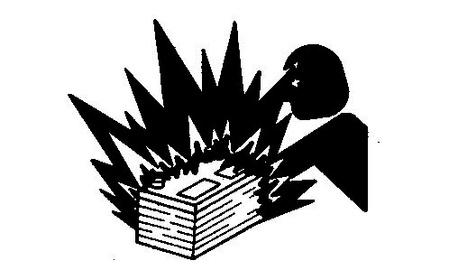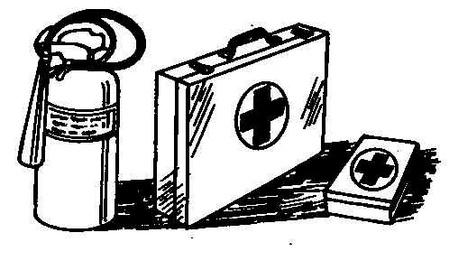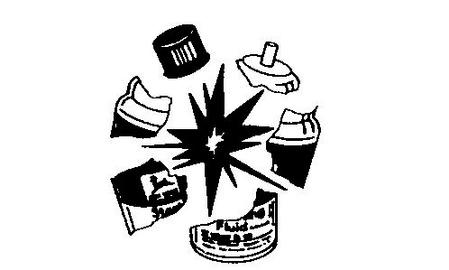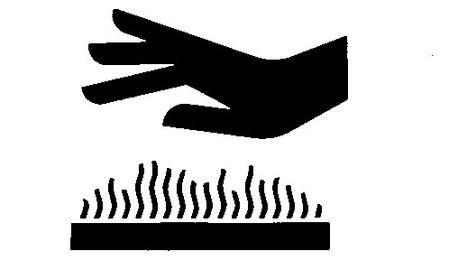
2 minute read
Wear Protective Clothing
Protective Clothing
Wear close fitting clothing and safety equipment appropriate to the job.
Advertisement
Prolonged exposure to loud noise can cause impairment or loss of hearing
Wear a suitable hearing protective device such as earmuffs or earplugs to protect against objectionable or uncomfortable loud noises
Operating equipment safely requires the full attention of the operator Do not wear radio or music headphones while operating machine.

Service Machines Safely
Moving Parts
Tie long hair behind your head Do not wear a necktie, scarf, loose clothing, or necklace when you work near machine tools or moving parts If these items were to get caught, severe injury could result

Remove rings and other jewelry to prevent electrical shorts and entanglement in moving parts.
Stay Clear of Rotating Drivelines
Rotating Drivelines
Entanglement in rotating driveline can cause serious injury or death.
Keep all shields in place at all times Make sure rotating shields turn freely
Wear close-fitting clothing Stop the engine and be sure that all rotating parts and drivelines are stopped before making adjustments, connections, or performing any type of service on engine or machine driven equipment
Handle Fluids Safely—Avoid Fires
Avoid Fires
When you work around fuel, do not smoke or work near heaters or other fire hazards. Store flammable fluids away from fire hazards Do not incinerate or puncture pressurized containers
Make sure machine is clean of trash, grease, and debris.
Do not store oily rags; they can ignite and burn spontaneously.

Prevent Battery Explosions
Battery Explosions
Keep sparks, lighted matches, and open flame away from the top of battery. Battery gas can explode.

Never check battery charge by placing a metal object across the posts Use a volt-meter or hydrometer
Do not charge a frozen battery; it may explode Warm battery to 16°C (60°F)

Prepare for Emergencies
First Aid Kit
Be prepared if a fire starts.
Keep a first aid kit and fire extinguisher handy
Keep emergency numbers for doctors, ambulance service, hospital, and fire department near your telephone.
Remove Paint Before Welding or Heating
Toxic Fumes
Avoid potentially toxic fumes and dust
Hazardous fumes can be generated when paint is heated by welding, soldering, or using a torch.
Remove paint before heating:
Remove paint a minimum of 100 mm (4 in.) from area to be affected by heating. If paint cannot be removed, wear an approved respirator before heating or welding.
If you sand or grind paint, avoid breathing the dust. Wear an approved respirator.

If you use solvent or paint stripper, remove stripper with soap and water before welding Remove solvent or paint stripper containers and other flammable material from area Allow fumes to disperse at least 15 minutes before welding or heating.
Do not use a chlorinated solvent in areas where welding will take place
Do all work in an area that is well ventilated to carry toxic fumes and dust away
Dispose of paint and solvent properly.
Avoid Heating Near Pressurized Fluid Lines
Flammable Spray
Flammable spray can be generated by heating near pressurized fluid lines, resulting in severe burns to yourself and bystanders Do not heat by welding, soldering, or using a torch near pressurized fluid lines or other flammable materials Pressurized lines can accidentally burst when heat goes beyond the immediate flame area.

Handle Starting Fluid Safely
Store Safely
Starting fluid is highly flammable
Keep all sparks and flame away when using it. Keep starting fluid away from batteries and cables.
To prevent accidental discharge when storing the pressurized can, keep the cap on the container, and store in a cool, protected location

Do not incinerate or puncture a starting fluid container
Avoid Hot Exhaust
Safety Hot Parts
Servicing machine or attachments with engine running can result in serious personal injury Avoid exposure and skin contact with hot exhaust gases and components.
Exhaust parts and streams become very hot during operation Exhaust gases and components reach temperatures hot enough to burn people, ignite, or melt common materials

Clean Exhaust Filter Safely

Fire Safety
Hand Over Flame

Moving Parts



